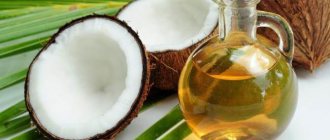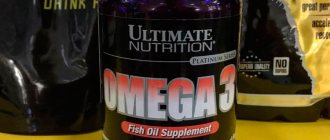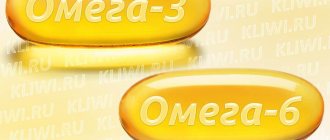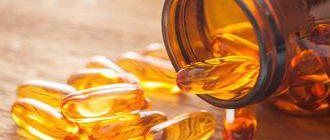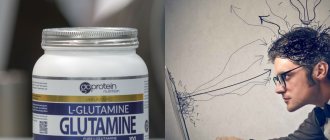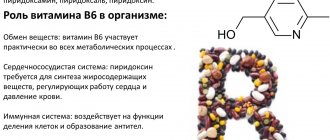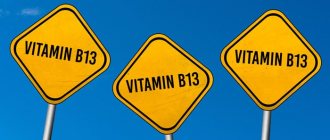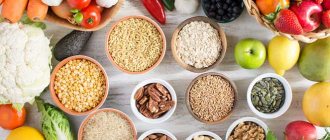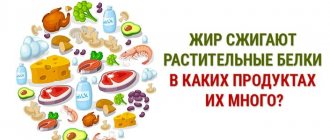Omega-3 fatty acids have numerous scientifically proven health benefits. Among them: anti-inflammatory effects, reduced risk of cardiovascular disease, dementia and cancer, benefits for eye and kidney health, protection against muscle catabolism.
The recommended daily dose of omega-3 ranges from 500 mg to 2000 mg 1,2 (there is no consensus). It can be obtained from dietary supplements or food products.
Below is a list of foods rich in omega-3, as well as a table comparing their omega-6 and omega-3 fatty acid content.
When choosing foods that provide omega-3s, it is important to understand that there are different forms of omega-3s and not all are created equal. See more: What are omega-3 fatty acids good for? Scientific research.
Main thoughts:
In terms of contamination with mercury and other toxins, the best sources of omega-3 are those species of fish that live off the bottom (the closer to the surface, the better) and also feed on algae (they are not predators)
The best natural foods containing active forms of omega-3 (DHA and EPA) are fish and seafood: sardines, cod, salmon, fish roe, oysters, anchovies and seaweed.
The best plant foods that contain high amounts of omega-3 are flaxseed oil and seeds, chia seeds, walnuts, soy and hemp seeds. Omega-3 is present in them in the inactive and therefore not very healthy form of ALA
Fish and seafood rich in omega-3
Fish and seafood, as well as dietary supplements derived from them, are the best sources of omega-3 fatty acids.
They contain omega-3 in active form - EPA and DHA - which are the “culprits” of all the beneficial properties of omega-3.
But.
When it comes to fish, there is a very high probability of contamination with toxins, in particular mercury. The same applies to food additives under the general name “fish oil”, the chemical purity of which is determined by the purity of the raw materials, i.e. fish.
We recommend : How to take Omega-3 correctly: instructions for use, dosage per day, harm
What types of fish are the best sources of omega-3?
Any toxin that is released into water by humans during industrial activities and is soluble in fat can most likely be found in fish meat or omega-3 supplements.
The best fish for omega-3s are those that feed on phytoplankton (algae) and do not live near the bottom. These are sardines, herring, mackerel, for example.
Levels of mercury, lead and other toxins are typically increased in the meat and fat of predatory fish because... contaminants tend to accumulate in the carcasses of those animals that are used to feed other animals (consumers of the 2nd and 3rd order according to the classification of school biology textbooks) 22,23.
also a clear relationship between the depth of a fish’s habitat and the level of mercury in its meat : the deeper, the more toxins. Species of fish that live and feed near the bottom are most often scavengers 24,25.
Omega-3 supplements can be contaminated with the same toxins as fish, but production technology makes a difference. Preference should always be given to additives made from non-predatory species of waterborne species (sardines, cod, shrimp, shellfish) and, of course, algae.
In terms of contamination with mercury and other toxins, the best sources of omega-3 are those species of fish that live off the bottom (the closer to the surface, the better) and also feed on algae (they are not predators)
We recommend : Sports nutrition Omega-3 (fish oil): why are they useful in bodybuilding and fitness, how to take it, what is better “sports omega-3” or drugs from the pharmacy?
1 Mackerel
Mackerel opens the list of foods rich in omega-3 due to its popularity among Russians due to its relative cheapness. This is the case when cheap does not mean bad.
Mackerel is a small fatty fish very rich in beneficial nutrients.
100g of mackerel contains 200% of the recommended daily intake of vitamin B12 and 100% of selenium 3.
Omega-3 content in mackerel: 5134 mg per 100 g
2 Salmon
Salmon is one of the healthiest foods on the planet. It is rich in high-quality protein, potassium, selenium and B vitamins 4.5.
There are two types of salmon: wild salmon, which is caught in natural conditions, and farmed salmon (called “aquaculture”), which is raised in special farms.
Share with us your experience of losing weight, using sports nutrition or pharmacology!
The nutritional values of both types are slightly different, including their omega-3 and omega-6 content (see table below): Farmed salmon is significantly higher in omega-6 and fat.
It is also an indisputable fact that farmed salmon are highly polluted with chemicals, toxins and parasites 27,28.
In a word: stay away from aquaculture salmon, buy only wild salmon. Yes, this is not an easy task.
Omega-3 content in salmon: 2260-2585 mg per 100 g.
3 Cod liver
Cod liver not only contains large amounts of omega-3, but also vitamins D and A6.
Just one teaspoon of cod liver oil provides several times the daily requirement of these three important nutrients.
However, you need to be careful: it is easy to overdose on vitamin A , especially if you do not take into account its other sources.
Omega-3 content in cod liver: 19135 per 100 g.
We recommend : What omega-3 preparations (capsules) are the best? Guide on how to choose and what to buy
4 Herring
Herring or “herring” is a medium-sized fatty fish that most of us know in its salted version. In addition to omega-3, it is rich in vitamin D, selenium and vitamin B12 29.
Omega-3 content in herring: 1742 mg per 100 g.
5 Oysters
Shellfish are one of the most beneficial foods for human health .
The zinc content of oysters is the highest of any food : 100 g contains 600% of the daily value of zinc, 200% of copper and 300% of vitamin B12 8.
If you think what we do is important, support our project!
YES!
In many countries, oysters are eaten raw as a delicacy.
Omega-3 content in oysters: 672 mg per 100 g.
6 Sardines
Sardines are a small oily fish, better known to us in canned form. They contain a huge amount of nutrients, almost the complete set a person needs.
100 g of sardines contain 200% of the daily value of vitamin B12 and 100% of the daily value of vitamin D and selenium 9.
They are a good source of omega-3s, but are quite high in omega-6 fatty acids (see table below).
Omega-3 content in sardines: 1480 mg per 100 g.
Recommended : How effective are Omega-3s for weight loss? Scientific research
7 Anchovies
Anchovies are small oily fish with a spicy, specific taste. They are sometimes stuffed with olives.
In addition to omega-3 fatty acids, they are rich in selenium and vitamin B3 (niacin), and some types are rich in calcium 10.
Omega-3 content in anchovies: 2149 mg per 100 g.
8 Fish roe
Fish roe is rich in vitamin B4 (choline) and contains very little omega-6 11.
Omega content in fish roe-3: 6789 per 100 g.
9 Algae oil
Algae oil is one of the few sources of highly effective forms of omega-3 DHA and EPA for vegetarians and vegans, and is as beneficial as fish oil supplements or simply fatty fish.
Scientific studies show equal effectiveness and absorption of fish oil and algae-based omega-3 supplements 19.
Read us on the networks
Omega-3 Content of Omega-3 Algae Supplements: 400-500 mg DHA and EPA per capsule.
The best natural foods containing active forms of omega-3 (DHA and EPA) are fish and seafood: sardines, cod, salmon, fish roe, oysters, anchovies and seaweed.
We recommend : Vitamins for athletes: pros and cons
conclusions
When discussing the benefits of polyunsaturated fatty acids, it is worth mentioning one small feature. There is no doubt that taking fish oil will benefit you greatly as an athlete, but these benefits, including adaptogenic properties, are not due to the magic or effect of omega-3 on the body.
The fact is that we experience a serious lack of this acid in our body, and if it is present, all processes are simply normalized. However, given the peculiarities of the national cuisine of most countries, taking these polyunsaturated fatty acids is as necessary for a CrossFit athlete as drinking protein shakes.
Source
More articles from the section “Benefits and harms of products”
How to brew rose hips in a thermos and without a thermos, properties and contraindications of the drink
Red rice - benefits and harm, how to cook deliciously
Is Hematogen a tasty treat or a medicine?
Buckwheat with kefir in the morning on an empty stomach - benefits and harms, recipe
The benefits and harms of yeast-free bread for your figure, calorie content and recipes
Benefits and harms of Chinese cabbage, contraindications, recipes
Pumpkin juice - beneficial properties and contraindications for women, men and children
Kissel - beneficial properties, contraindications, recipes
Chard - what kind of plant is it, benefits, harm, recipes
Bear fat - medicinal properties and contraindications, use and reviews
What are the benefits of fermented baked milk, what is its composition and who is it contraindicated for?
Plant foods rich in omega-3
All plant foods provide a source of omega-3 in the form of ALA, which is inactive and must be converted within the body into two other active forms, EPA and DHA, which are directly responsible for the beneficial properties of omega-3.
The conversion process has very low efficiency and therefore no health benefits: only about 5% of ALA is converted; the remaining 95% is converted into energy or fat.
This is important to keep in mind and NOT rely on the popular flaxseed oil as your sole source of omega-3s.
For more information about the different forms of omega-3 fatty acids, read the material What are omega-3 fatty acids good for? Scientific research.
10 Flax seeds and oil
Flax seeds and oil are one of the richest sources of omega-3 in the form of ALA. They are often recommended as a supplement to food to enrich it with omega-3.
In addition to omega-3, flaxseed oil contains a lot of vitamin E, magnesium and other microelements. Compared to other plant-based foods, they have a very good omega-6:omega-3 ratio of 12.13.
Omega-3 content in flaxseed oil: 7196 mg in a teaspoon of flaxseed oil or 64386 in 100 g of flax seeds.
We recommend : How to take vitamins and minerals correctly?
11 Chia seeds
In addition to being high in omega-3s in the form of ALA, chia seeds are rich in magnesium, calcium, phosphorus and protein 26.
100 g of chia seeds contain approximately 14 g of protein .
Separate studies confirm that regular consumption of chia seeds reduces the risk of chronic diseases. This is largely due to the omega-3 fatty acids, fiber and protein they contain.
Omega-3 content in sneeze seeds: 17694 mg per 100 g.
12 Walnut
Walnuts are rich in copper, magnesium, and vitamin E. Their bitter-tasting skin, which is often removed to improve the taste, contains a lot of antioxidants.
Walnuts contain 65% healthy fats and are loaded with omega-3 fatty acids in the form of ALA. They also contain quite a lot of omega-6 , which shifts the omega-6:omega-3 balance not for the better (see table below).
Omega-3 content in walnuts: 9079 mg per 100 g.
We recommend : Cottage cheese in bodybuilding: benefits for gaining muscle mass, losing weight, but NOT for drying
13 Soybeans
Soybeans are one of the best sources of quality plant protein.
In addition, they are rich in vitamin B2 (riboflavin), vitamin B9 (folate), vitamin K, magnesium and potassium 16.
Soy is relatively high in omega-3, as well as omega-6 .
Let us remember that for health it is important that the ratio of omega-6 to omega-3 is close to unity (in practice, according to statistics, it is close to 15:1). An imbalance between omega-6 and -3 is a recognized factor in the development of many diseases.
In general, soy is a rather controversial product . Its impressive beneficial properties are balanced by equally significant negative ones.
Thus, it and its derivative products contain isoflavones - a type of phytoestrogens, a plant analogue of the female sex hormone estrogen - which are often advertised as substances that are extremely beneficial to health, while scientific facts indicate that they are extremely harmful to health.
Soy also contains phytic acid, digestive inhibitors that interfere with the absorption of minerals and protein.
Omega-3 content in soy: 1443 mg per 100 g.
We recommend : Soy: HARM and questionable benefits. Scientific facts
We recommend : Soy protein isolate: 7 facts of HARM from an exceptionally “healthy” revolutionary product
14 Hemp seeds
Hemp seeds contain approximately 30% oil with a fairly large proportion of omega-3 fatty acids. In addition, they are rich in protein, magnesium, iron and zinc 20,21.
Omega-3 (ALA) content in hemp seeds: 21,600 mg per 100 g.
The best plant foods that contain high amounts of omega-3 are flaxseed oil and seeds, chia seeds, walnuts, soy and hemp seeds. Omega-3 is present in them in the inactive and therefore not very healthy form of ALA
Benefit
When assessing the biological role of ALA, DHA and EPA, it is worth highlighting the following effect on the body :
- Acceleration of metabolic processes.
- Helps in the construction of the nervous and endocrine systems.
- Participation in the formation of cell membranes.
- Protection against inflammatory processes and prevention of their development.
- Replenishing the energy deficit required for the full functioning of vital organs.
- Reducing pressure and maintaining it at a safe level.
- Protects the skin and reduces the risk of developing skin diseases.
- Anti-inflammatory and antioxidant effects.
- Improving the condition of hair, reducing its fragility, preventing hair loss.
- Removing excess cholesterol from the body.
- Improving visual acuity, reducing the risk of developing eye diseases.
- Protecting the heart and reducing the risk of developing cardiovascular diseases.
- Improving the condition of the skin, giving it firmness and elasticity.
- Normalization of blood sugar levels.
- Eliminating the risk of developing joint diseases and reducing symptoms.
- Help in the fight against chronic fatigue, increase endurance, increase performance. Products with Omega-3 fatty acids in the diet increase resistance to physical activity.
- Prevention of disturbances in the functioning of the central nervous system: eliminates disorders and frequent mood swings.
- Increased production of certain hormones.
- Increased mental activity.
- Help with fetal development.
Table of omega-3 and omega-6 content in products
Data on the content of omega-3 fatty acids in foods are summarized in the table.
| Product | Measure | Omega-3 content | Omega-6 content |
| Mackerel | 100 g | 5134 | 369 |
| Salmon (sea) | 100 g | 2585 | 220 |
| Salmon (farm) | 100 g | 2260 | 666 |
| Cod liver | 100 g | 19135 | 935 |
| Herring | 100 g | 1742 | 131 |
| Oysters | 100 g | 672 | 58 |
| Sardines | 100 g | 1480 | 3544 |
| Anchovies | 100 g | 2149 | 367 |
| Fish roe | 100 g | 6788 | 81 |
| Omega-3 Algae Supplements | 1 capsule | 400-500 mg | 0 |
| Flax seeds | 100 g | 64386 | 16684 |
| Linseed oil | 100 g | 53304 | 12701 |
| Chia seeds | 100 g | 17694 | 5832 |
| Walnut | 100 g | 9079 | 38091 |
| Soya beans | 100 g | 1443 | 10765 |
What are the dangers of shortages and excesses?
If the diet is improperly formed (vegetarianism, diets, fasting) or there are problems with the gastrointestinal tract, there is a high risk of developing EFA deficiency . The easiest way to recognize a deficiency is by the following symptoms:
- pain in muscles, tendons and joints;
- dandruff;
- feeling of thirst;
- increased fatigue of the body, decreased performance;
- hair problems (fragility and hair loss);
- the appearance of a rash on the skin, peeling, drying out;
- apathetic and depressive states;
- deterioration of the condition of the nail plates, decrease in their density;
- problems with stool, which manifest themselves in the form of constipation;
- disruptions in wound healing processes;
- gradual increase in blood pressure;
- weakening of the immune system, increasing the risk of colds and viral diseases;
- deterioration of memory and attention, excessive absent-mindedness;
- decreased vision;
- delay in the processes of mental development and growth;
- slowing down recovery processes.
If you do not know which foods contain Omega-3 fatty acids and do not saturate your diet with them, then the appearance of the described symptoms is a reality. In addition, a deficiency of useful elements over a long period of time leads to the development of problems with the central nervous system and neuropsychiatric diseases.
An excess of the substance in question is a rare phenomenon , which is often associated with uncontrolled use of drugs containing a high content of polyunsaturated fatty acids. Moreover, an overdose of a substance is no less dangerous than a deficiency. The problem manifests itself as follows:
- Loose stools, diarrhea.
- Reduced blood clotting, which leads to prolonged bleeding. This is possible even with minor cuts. The greatest danger comes from internal hemorrhages - in the stomach or intestines.
- Malfunctions of the gastrointestinal tract.
- Gradual decrease in pressure level.
Rules for use by children and pregnant women
2.2-2.5 grams to the child during pregnancy . That is why women during pregnancy and children should actively take fish containing Omega-3 fatty acids. However, you should avoid eating king mackerel and swordfish due to their high mercury content. Children deserve special attention. They should take supplements under the supervision of medical professionals or parents to avoid overdose.
Omega-3 fatty acids also have a number of contraindications . They are not recommended for people with blood thinning diseases. If you are predisposed or have such a disease, you should consult your doctor.
